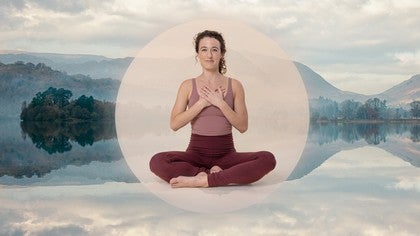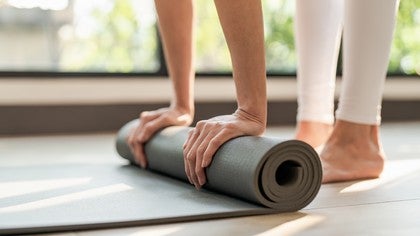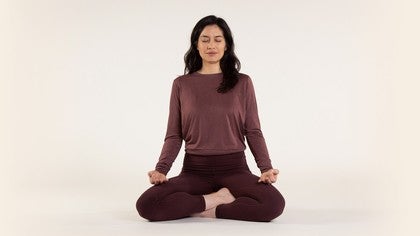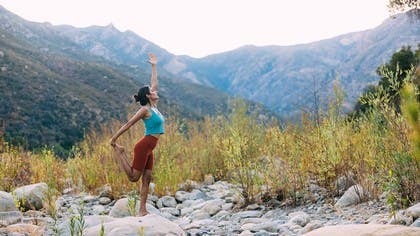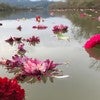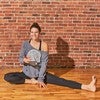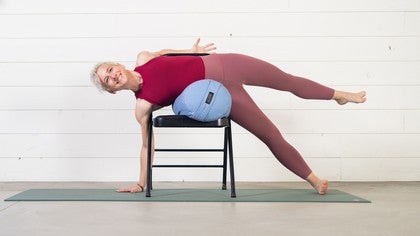
Coming to Your Senses
I want to learn how to be here, both in my body and here in the world. I want to know my unique way of being on this planet and to grow in my creative expression. I also want to tend a quality of knowing that I am a part of this world. All of the beauty and suffering of this world is a part of me. Learning to be with sensation has taught me so much about being in relationship with myself and with all things.
I am in an ongoing research project around learning how to expand and stabilize into pure presence. My research exists in my body. A body in relationship, in constant dialog with internal and external environments. Bringing attention to the senses is a bit of a short cut into presence. Sensation opens us up to curiosity of this present moment. Through sensing, we are in a conversation of both internal and external landscapes where we are learning about ourselves and our environment.
I’d like to offer you a brief sensing exercise that will hopefully support you in having your own experience inside of this writing.
Pick up an object that is close to you. It could be anything - a cup, rock, or pencil. Experiment with moving your hands around this object and learn about it through touch. As you touch, you are also being touched. Experiment with touching this object with your eyes closed. What do you notice?
Bring this object up to your nose and breathe it in. What does it smell like? Notice the intimacy of breathing something in. Again, let yourself pause from reading this and linger with this exploration. Look at your object again and has anything changed? Look at a different object that is in your space and have you already decided what it feels like or smells like. Notice any preconceived expectations.
The way that we sense shapes how we experience the world. As you read this, notice what parts of your body touch the ground. Because we are all different, the way you experience touch is different than the way I would sense it. Our senses developed based on our experiences. The kind of touch you received, the food you ate, the smells, the sounds, the sights, all influenced the development of your senses. From the beginning, we’ve been learning about the world through our senses.
Think of the last time you were with a baby or a small child and reflect on the aliveness of their contact with the world. They are learning through touch, movement, and all of their other sense organs. Of course, as we age, we develop patterns and habits and the objects in our world aren’t as fascinating as they were when we were babies.
Most of what we sense is limited by our preconceived expectations. We look in the mirror, go for a walk, and we see what we expect to see. We eat a meal and we taste what we expect to taste. We practice Warrior 2 and we sense what we expect to sense. If a yoga teacher simply says the name of a pose, sometimes we will already decide what to sense based on our expectations. If your wrists hurt in Downward Facing Dog, it is possible that you will already decide to look for the sensation of pain in the wrists before even approaching the shape.
At its best, expectations can keep us safe and could alarm us of smoke in the air or a food that would result in an allergic reaction. These expectations inform us of what to accept and reject. At its worst, people can be mistreated or even die over these preconceived expectations because of the isms: racism, ableism, sexism, ageism, and classism. I work with students in a yoga teacher training to prepare them for antiracist teachers. A lot of the work we do is around learning to be with sensation and to tend to yourself inside that experience to reduce reactivity. When we are less reactive, we can respond. We have more choice. When we are able to tend and show up for ourselves and our sensations, we are supporting the creation of safer spaces.
When I become aware of my senses, I can take in more content. What may have felt tight or restricted can now widen into possibility. When I feel constricted around a belief I ask, "What is happening at the level of touching, tasting, smelling, hearing, and seeing? What would it be like to learn about this place through sound?" With those questions, I am able to open to more movement and possibility.
Being able to widen into an experience of sensing allows us to loosen our expectations, our habits, our projections, and we have more choice in what we are bringing into our lives and how to move into action with the world. When we sense with fresh perception and newness, with a willingness to not know and to be in mystery, then we are in the world and certainly in our asana practice with more curiosity and creativity.
In the yoga asana practice, each of us are in a process of translation. How are these postures meeting each one of us uniquely? Taking into consideration your distinctive bones, joints, energy level, what you had for breakfast, and how you change every day. How can you sense each posture with freshness? Each time the hands are placed on the ground for a yoga posture, is the training in habits or in a fresh conversation? When I see a good friend, I don’t want to already know everything about them. I want to be in an alive process with my community, with myself, and certainly with my formal practice of movement and meditation.
Sensation brings us into the moment, into the body, and into conversation. Sensing is a practice and you can drop into it whenever you like. Notice what you notice about touching and being touched, tasting and being tasted, smelling and being smelled, listening and being heard, seeing and being seen.
Join Suniti in her show, Yoga and the Somatic Experience, on Yoga Anytime.
Comments
You need to be a subscriber to post a comment.
Please Log In or Create an Account to start your free trial.

